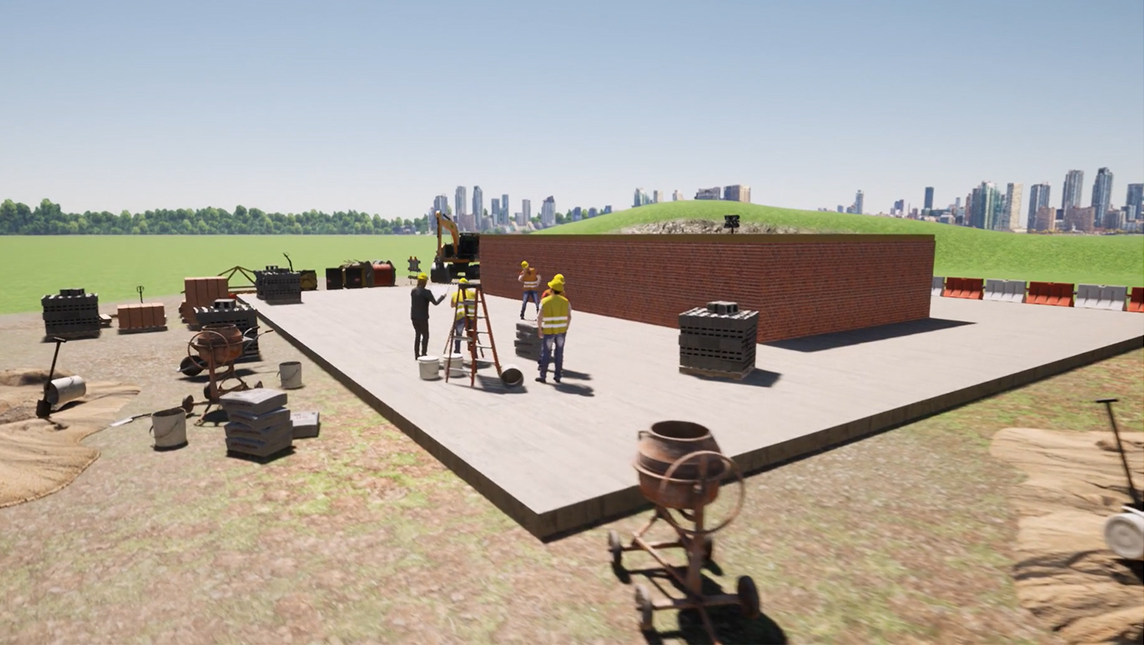
Blended learning with a twist at the Heart of Worcestershire College
Blended learning is nothing new for the team at the Heart of Worcestershire College. They’ve been teaching in this way for nearly a decade. But three years ago, they set about running a major project that would span the entire institution and fundamentally change how subjects were taught.
Not only has the new virtual learning environment significantly improved the student experience – with 85% saying it’s had a positive impact on their subject knowledge and their highest ever exam results for the sports department - it’s also earned the college some well-deserved acclaim. It was one of three finalists for the 2023 Beacon Award for effective use of digital technology in education, which is sponsored by Jisc.
Director of blended and online learning Amy Hollier shares how, and why, they set about this transformational body of work.
Consulting with students

“As all our students have blended learning as part of their timetable, we wanted to make sure it was adding as much value as possible to their learning experience, we wanted to do things a little differently. The first step was consulting with the students to find out what they wanted to see from a blended learning programme. Next, we spoke to employers and external stakeholders to see what they wanted us to develop from a skills perspective with our learners. Then it was onto the staff! “What would help you to deliver your technical programmes through a blended medium?”. It was a huge consultation piece, but well worth doing.
“From this consultation we homed in on the priority - to develop learners 21st century skills. The ideal way to do that was through technology. We wanted to improve our learner’s employability skills, so what could we do with technology now that we hadn’t been able to do before?
We developed a whole suite of new elements, designed to develop not only technical skill, but to equip our students for the future workplace.
“The outcome was an entirely transformed virtual learning environment, which focusses on communication, problem solving, creativity and critical thinking. We developed a whole suite of new elements, designed to develop not only technical skill, but to equip our students for the future workplace. We wanted to develop those other skills that industry told us to focus on, and that the learners told us they wanted support with."
Engaging learners with real-life scenarios
“The learners get assigned tasks on a weekly basis which they work through independently online. The courses use industry-relevant digital tools to draw out necessary skills. Tasks are set based on real life working scenarios. For example, our construction learners are set a task where they have to quote for a job in a specific area. They have to work out all the logistics, order materials, and then bring all of that together in a project that they work on with their peers. It’s all online, so they have to set up Teams meetings and email suppliers to find out costings and materials.
“It’s hugely beneficial to those areas that wouldn't normally be learning online skills. A construction student may say “why would I need digital skills?”, but we explain that they’ll be liaising with clients online, they’ll be researching different products online… They’ll need all these skills in day-to-day life. The great bonus is, they’re all transferable skills as well."
Key features
- 1-2 hours per week online independent learning
- 21st century skill development
- Contextualised to subject area
- 6-week project - real life scenario
- Co-created with industry and students
- Digital badges into a digital pack
Bringing staff on board
“There was a big piece around bringing the staff on board to understand how they could develop the program from a curriculum perspective. They needed justification as to why we were doing this online. What kind of skills could do be developed through this medium? We also worked with digital learning advisors to investigate different digital tools tailored specifically to the various industries. For example, our engineering team worked with our digital learning advisors to integrate CAD software. The computing and digital media teams use Cisco software, and they integrate these tools into their task setting. There was a lot of staff training involved, so it not only upskilled students, it upskilled staff as well.
“There were challenges of course. As you would expect with an organisation our size, the initial reaction to the plans was mixed. Many staff saw the potential benefits immediately and were fully on-board while others required a bit more convincing. What we needed was a slight cultural shift.
“We met with staff to discuss what they wanted so that they felt that they had influence in the development of the programme. We worked alongside them to do lots of planning and scoping, and we explained why it was important and showed them examples of how industry was moving on. If we didn't keep up, we’d really be at a loss.
“To encourage teams, and foster a little healthy rivalry, we have an internal newsletter which shares best practice and examples of student voice feedback. It has a champions leader board showing participation. All this keeps the momentum and celebrates where teams are doing amazingly. There’s a slight element of competition between teams, which helps!"
Measuring success
“Student voice is our quality metric. If the learners are really enjoying it and are positive about it, then it shows that what we're doing is working. I thought it would take longer for the learners to engage with it, I thought they might be hesitant with change, but the feedback has been overwhelmingly positive! Over 85% of them agree that it’s deepened their subject knowledge. We've had the highest ever exam results for one of our sports departments that's directly linked to the platform elements."
Student voice is our quality metric. If the learners are really enjoying it and are positive about it, then it shows that what we're doing is working.
“Some really interesting feedback was that this new approach hasn’t just helped with deepening subject knowledge, but it’s helped with memory knowledge retention too. Learners have also said that their communication skills have improved, which is normally a tough one to crack through online methods.
“Subjects that don’t typically have digital elements, like sport, have used technology very cleverly, by tracking sports performance for example. It’s been amazing to see how it’s led to those learners embracing technology. It helps them on their lifelong learning journey, and it also helps them develop an online professional brand for future networking.
“The new platform has been in place since September 2021, and that’s why we entered the Beacon Award for effective use of technology. I am incredibly proud of our team and learners. Developing and implementing a whole new virtual learning environment certainly wasn’t easy, but the results speak for themselves. It was worth it.”
Find out more
Where is your college on its digital elevation journey? Our digital elevation tool helps to validate your institution's current position and identify the biggest opportunities.